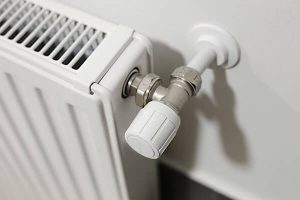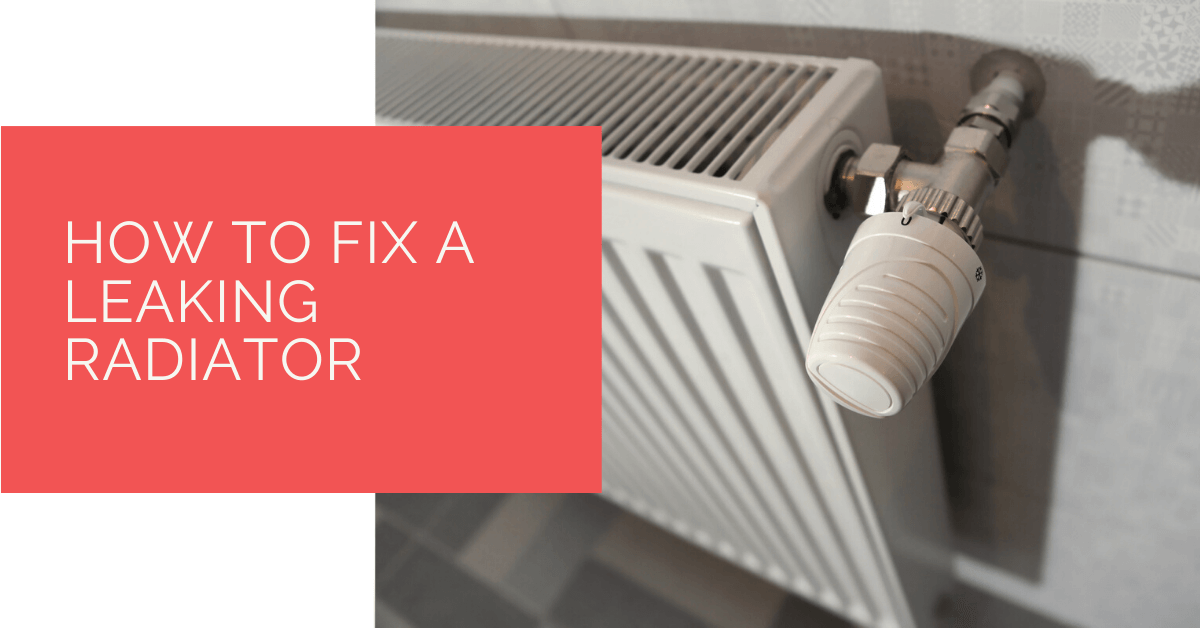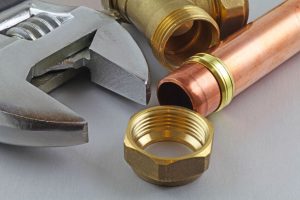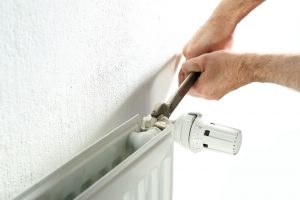Coming home from being out and about should be a good thing. Whether or not you were working, handling personal matters, or visiting with family and friends, coming home should mean returning to a place of rest and rejuvenation.
However, if you walk in the door and find out that your radiator is leaking water, then it doesn’t matter how your day was going. When you discover a wet patch underneath your radiator, you have to deal with a leaking radiator.
You need to drop whatever it is you are doing and work fast to prevent irrecoverable damage to your electronics and flooring. Fortunately, there is a step-by-step process you can use to return your home to normal quickly.
Contents
Step 1: Getting Ready To Fix Your Leaking Radiator
More than likely, you’re going to call someone to come help you fix the leaking radiator, be it a professional or a handy friend. In either case, you need to take certain steps while you wait for them to show up. Do what you can to catch the leaking water to prevent it from causing any more damage than it already has. You don’t need fancy tools for this. A bucket in the right position can work wonders, and even a few well-placed towels will get the job done for a while.

Step 2: Identifying The Location Of The Leak
Radiator leaks are bad enough on their own, but something that complicates matters is the fact that those leaks can happen in a variety of different places. You have to figure out where your specific leak is coming from. Start of by totally drying your radiator. Next, get a handful of toilet roll to place over the various fixtures of the radiator. You will eventually find a part that drenches your toilet roll, and that tells you where the source of the radiator leak is. The specific kind of radiator leak you have determines which particular Step 3 you need to take.
Step 3: Fixing the Type of Leak
Fixing Radiator Body Leaks
If your radiator is leaking from its body, a repair might not even be possible. Leaks like these are typically the result of corrosion, which means you need a total replacement. However, until you can buy a new radiator, you might be able to get by with a temporary fix. If your radiator has a feed and expansion tank, then you might be able to apply some plastic resin sealant so you can stem the flow of water. However, if you have a sealed central heating system, this trick isn’t going to work.
Fixing Radiator Gland Leaking
The gland of your radiator is likely a tiny fixture that is underneath the valve’s plastic lid. You can use PFTE tape to fix this. Turn the valve on and wait a moment to see if you have any water leaking from underneath the plastic cap. If this leaking does happen, then you also need to turn the lockshield valve off. Once you remove the plastic cap, unscrew the gland nut carefully. Tear or cut off a piece of 20-cm. PFTE tape, before wrapping it around your radiator’s valve spindle. Grab a flathead screwdriver so you can force the PFTE tape into the valve body. Screw the gland nut back into place, replace the plastic cap, and then turn the valve back on.
Fixing Radiator Pipe Joint Leaking
If your radiator is part of a compression heating system, then you are going to have a number of joints connecting your radiator to the surrounding pipes. If one of these joints is loose, then a leak can happen. Most of the time, you only need a spanner to tighten up the joints to end the leak. However, if you still have a water leak after tightening up the joints, do the following:
- Drain the radiator down under the leak source
- Remove the nut of the leaking pipe with your spanner
- Wrap PFTE tape around the part where the olive face meets the joint
- Use your spanner to tighten the nut again

Fixing Radiator Spindle Leaking
If you’ve figured out that your leak is happening from the spindle than the valve, you can actually consider yourself lucky, because this one is a simple fix. Just use your spanner and tighten up the gland nut. That should do it, but if it doesn’t, undo the nut gland before wrapping some PFTE tape down in the spindle before tightening everything back up again. Just keep in mind that it’s very easy to confuse spindle and valve leaks with one another easily, but there are steps for both in this guide.
Fixing Radiator Valve Leaking
If a leaking radiator valve is what you have, then it should also be an easy fix. These usually happen due to damage in the internal spindle packing. This leak happens if the valve is partially open, but it stops when the valve is in a closed position. Use the following DIY steps if you don’t call someone in:
- Drain the leaky valve below the specific source of the leak
- Turn off the lockshield valve and the supply valve
- Use towels and buckets to catch any water escaping from the leaking valve
- Find the union nut; use your spanner to undo it
- Open your bleed valve to let the remaining water pour out
- Once empty, apply PFTE tape liberally to wrap your valve tip carefully
- Tighten up the union nut again with your spanner before opening both the lockshield and bleed valves
- Let the radiator have time to fill up once more
- Don’t close the bleed valve until you are confident there are no leaks remaining

Step 4: Preventing Future Leaks
Whether you patch up your current radiator or buy a new one, you can take certain steps to prevent issues in the future. The best thing you can do is to choose a rust and corrosion inhibitor, but also to use a radiator cleaner to clean the water routinely. This can save you money in the long run by minimizing repair costs and helping your radiator last longer.
Heat Pump Source: Reliable Heating and Cooling Solutions
At Heat Pump Source, we take pride in our unwavering commitment to serving the UK community with top-tier HVAC solutions. From the efficiency of heat pumps and the cool relief of air conditioning to the warmth of boilers, radiators, and underfloor heating, our dedicated team is always at the forefront of innovation. We understand the unique needs of every household and business, and we strive to provide dependable health and cooling products and services that are tailored just for you. Ensuring your comfort and satisfaction is our utmost priority. Whether you have questions, need guidance, or require support, we’re always here to assist. Please don’t hesitate to contact us; we’re eager to be of service.
Conclusion
Dealing with a leaking radiator can be stressful when you return home. However, following the steps outlined in this guide, you can quickly address the issue and restore your home’s comfort. Taking swift action to catch the leaking water, identify the source of the leak, and apply the appropriate fix for your specific situation is crucial. Whether you need a temporary solution or a complete replacement, these steps can help prevent further damage to your home.
To prevent future radiator problems, consider using rust and corrosion inhibitors and regularly cleaning the water in your radiator. These proactive measures can extend the life of your radiator and reduce the likelihood of encountering leaks in the future.
About the Author
At Heat Pump Source, our articles are the product of a collaborative effort among a team of highly skilled HVAC experts. Our dedicated professionals, hailing from diverse backgrounds in heating, ventilation, air conditioning, and refrigeration, contribute their extensive knowledge and experience to every piece of content. This multidisciplinary approach ensures comprehensive coverage. Our commitment is to deliver authoritative, reliable, and tailored advice to meet the unique needs of every household and business across the UK.



